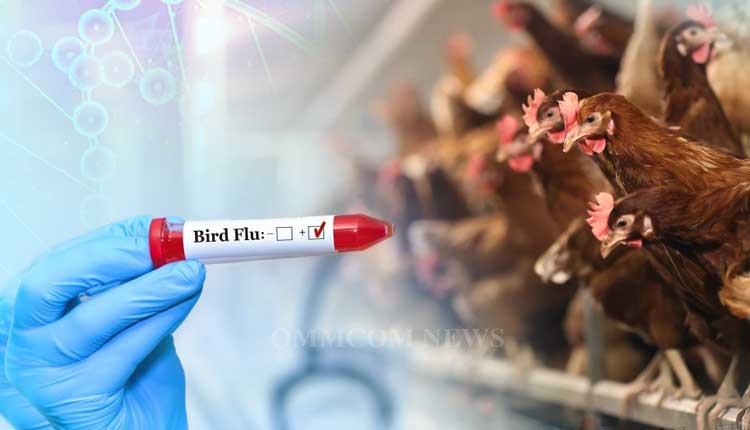Cambodia has reported its 12th human case of H5N1 bird flu in 2025, a 5-year-old boy from Kampot province, highlighting a worrying uptick in infections. With a mortality rate exceeding 50%, H5N1 is a serious threat, particularly for those exposed to infected poultry. This article outlines the early symptoms, risks, and precautions for H5N1, drawing on recent cases in Cambodia and global trends.
H5N1 in Cambodia: The Latest Case
On July 3, 2025, Cambodia’s Ministry of Health confirmed a 5-year-old boy from Kamakor village, Angkor Chey district, Kampot province, tested positive for H5N1. He exhibited fever, cough, and dyspnea (difficulty breathing) and is under medical care. This marks the 12th case in Cambodia this year, with seven reported in June alone, and six fatalities recorded. Most cases involve children or young adults exposed to sick or dead poultry, often through handling or consumption. The virus, primarily clade 2.3.2.1c with reassortant genes from clade 2.3.4.4b, remains endemic in Cambodia’s poultry.
What Is H5N1 Bird Flu?
H5N1 is a highly pathogenic avian influenza virus that mainly affects birds but can infect humans through direct contact with infected poultry, their bodily fluids (e.g., saliva, feces), or contaminated environments. First identified in Cambodia in 2003, it has a global case fatality rate (CFR) of 51.4% (464 deaths out of 903 cases from 2003 to August 2024). In Cambodia, the CFR is higher at 59.7% (43 deaths out of 72 cases from 2003 to 2024). Unlike seasonal flu, H5N1 can cause severe respiratory illness and multi-organ failure if untreated. Human-to-human transmission is rare, with no confirmed cases in Cambodia’s 2025 outbreak.
Early Signs and Symptoms of H5N1
H5N1 symptoms often mimic seasonal flu initially, complicating early detection. According to the World Health Organization (WHO), key symptoms include:
- Initial Symptoms (within 2–5 days of exposure):
- High fever (>38°C)
- Cough
- Sore throat
- Body aches
- Fatigue
- Severe Symptoms (as infection progresses):
- Shortness of breath
- Chest pain
- Diarrhea
- Seizures
- Confusion or altered mental status
Without early intervention, H5N1 can rapidly escalate to pneumonia, acute respiratory distress syndrome (ARDS), and multi-organ failure. For example, Cambodia’s recent cases, including a 15-year-old girl (August 2024) and a 41-year-old woman (June 2025), progressed to critical conditions or death due to delayed treatment after poultry exposure.
H5N1 in Cambodia: 2025 Trends
Cambodia’s 12 cases in 2025 follow a resurgence since February 2023, after an eight-year lull. Key observations:
- Demographics: Nine of the 12 cases involved individuals under 18, with two fatalities (a 2-year-old and a 3-year-old).
- Exposure: All cases are linked to direct poultry contact, such as handling or cooking sick chickens. For instance, the 5-year-old boy’s family reported dead poultry in their village.
- Virus Strain: Most cases involve a reassortant H5N1 (clade 2.3.2.1c with 2.3.4.4b genes), detected since late 2023, which increases its adaptability but shows no human-to-human transmission markers.
- Response: Cambodia’s Ministry of Health has deployed rapid response teams, distributed oseltamivir (Tamiflu), and launched education campaigns to curb transmission.
Global Context: H5N1 in the US and Beyond
In the US, H5N1 (clade 2.3.4.4b) has been detected in dairy cattle and farm workers since 2024, with mild cases reported (e.g., conjunctivitis, respiratory symptoms). Unlike Cambodia’s poultry-driven cases, US infections stem from cattle exposure, raising concerns about cross-species transmission. Globally, 903 cases and 464 deaths have been reported from 2003 to August 2024, with Cambodia accounting for 72 cases. The WHO assesses the public health risk as low but emphasizes vigilant surveillance due to the virus’s mutation potential.
Complications and After-Effects
Survivors of H5N1 may face long-term health challenges, including:
- Persistent fatigue
- Lung damage (e.g., scarring from pneumonia)
- Depression or anxiety
- Increased susceptibility to secondary infections
These effects can last weeks to months, particularly in severe cases. For example, a 46-year-old woman and her 16-year-old son in Siem Reap, treated with oseltamivir, recovered but required extended monitoring.
When to Seek Medical Care
If you’ve had contact with poultry or live animal markets and develop flu-like symptoms, seek medical attention immediately. Inform your doctor of your exposure history. Early treatment with antivirals like oseltamivir can reduce severity and complications. For example, Cambodia’s rapid response teams have distributed Tamiflu to contacts of infected individuals, preventing further spread.
Preventive Measures
To minimize H5N1 risk, the WHO recommends:
- Avoid contact with sick or dead poultry and contaminated surfaces.
- Practice good hand hygiene with soap or alcohol-based sanitizers.
- Report sick or dead animals to veterinary authorities.
- Use personal protective equipment (PPE) when handling poultry in high-risk areas.
Cambodia’s health campaigns emphasize these measures, particularly in rural areas with backyard poultry.
Conclusion
Cambodia’s 12th H5N1 case in 2025 underscores the virus’s ongoing threat, particularly in poultry-heavy regions. Early symptoms like fever, cough, and shortness of breath should prompt immediate medical consultation, especially for those exposed to birds. While human-to-human transmission remains rare, the high mortality rate (59.7% in Cambodia) demands vigilance. Strengthening surveillance, avoiding poultry contact, and seeking early treatment are critical to managing this risk. Consult healthcare providers if symptoms arise and stay informed via WHO or local health updates.
Disclaimer: This article is for educational purposes and not medical advice. Consult a healthcare professional for personalized guidance.

